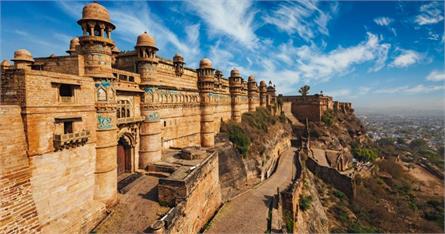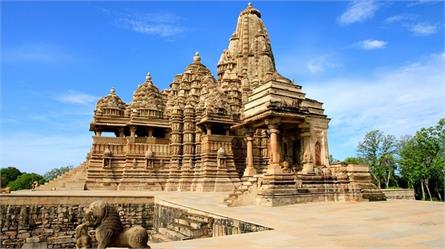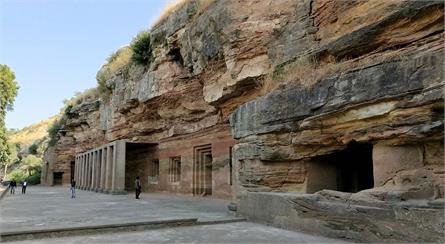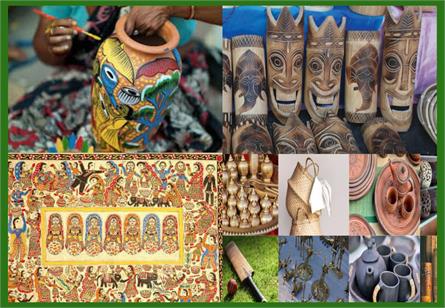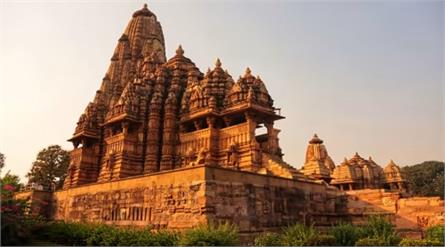Uttar Pradesh: Exploring the Rich Heritage and Vibrant Culture
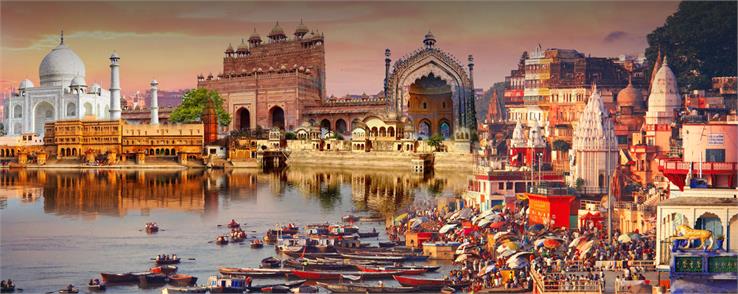
Uttar Pradesh, commonly referred to as UP, is a state situated in the northern part of India. It is the most populous state in the country and spans an area of approximately 243,290 square kilometres. UP is a state renowned for its diverse and fascinating history. This area has a deep-rooted past that can be traced back to ancient times, with its narrative intricately entwined with the rise and fall of various empires. Among the earliest known civilizations in Uttar Pradesh, the Indus Valley Civilization stands out. This great state in northern India is a treasure trove of history, culture, and natural beauty. With its diverse landscapes, vibrant cities, and rich heritage, Uttar Pradesh truly has something for everyone.
Also Read: Madhya Pradesh
One of the most exciting aspects of Uttar Pradesh is its historical significance. This land has witnessed some of the most important events in Indian history. From the ancient city of Varanasi, believed to be one of the oldest inhabited cities in the world, to the magnificent Taj Mahal in Agra, which is considered a wonder of the world, Uttar Pradesh is home to numerous architectural marvels that reflect the grandeur of its past. The state has also dotted with innumerable forts, palaces, and temples that showcase the artistic brilliance and architectural finesse of various dynasties that ruled here.
Uttar Pradesh also offers a plethora of natural wonders. This state boasts diverse landscapes, from the majestic Himalayan foothills in the north to the serene Ganges plains in the south. The Dudhwa National Park in Lakhimpur Kheri district is a haven for wildlife enthusiasts, with its dense forests and rare species like tigers and rhinoceros. On the other hand, the Chambal River Sanctuary is famous for its gharials and dolphins.
What makes Uttar Pradesh even more exciting is its cultural vibrancy. From the mouthwatering kebabs of Lucknow to the sweet delicacies like jalebi and petha, the food in Uttar Pradesh is a true gastronomic delight.
Also Read: Famous Caves of Madhya Pradesh
History
Uttar Pradesh has a rich and diverse historical background that dates back to ancient times. The region was an important centre of civilization during the Indus Valley Civilization, which flourished around 2500 BCE. It witnessed the rise and fall of several empires and dynasties throughout history.
One of the earliest empires to rule the region was the Maurya Empire, led by Emperor Ashoka. During the medieval period, the Delhi Sultanate and later the Mughal Empire influenced Uttar Pradesh. The state also witnessed the emergence of various regional powers, such as the Kingdom of Awadh and the Maratha Empire.
Also Read: Must Visit Forts And Temples of Madhya Pradesh
In the 19th and early 20th centuries, Uttar Pradesh played a significant role in the Indian independence movement against British colonial rule. Many prominent freedom fighters, including Mahatma Gandhi, Jawaharlal Nehru, and Subhash Chandra Bose, were actively involved in Uttar Pradesh.
After India gained independence in 1947, Uttar Pradesh became a separate state in 1950. Over the years, it has experienced significant political, social, and economic developments.
Geography

Uttar Pradesh is located in the northern plains of India and is bordered by several states. It shares its boundaries with Uttarakhand and Himachal Pradesh in the northwest, Haryana and Delhi in the west, Rajasthan in the southwest, Madhya Pradesh in the south, Chhattisgarh and Jharkhand in the southeast, Bihar in the east, and Nepal in the northeast. The foothills of the Himalayas flank the northern part of Uttar Pradesh.
The state has traversed several rivers, including the Ganges, Yamuna, Ghaghara, and Saryu, which play a crucial role in the irrigation and agriculture of the region. The fertile Gangetic plains dominate the landscape, making agriculture a significant economic activity in the state.
Uttar Pradesh has a varied climate with three seasons: summer, monsoon, and winter. Summers are hot and dry, with temperatures soaring above 40 degrees Celsius (104 degrees Fahrenheit). The region has considerable rainfall during the monsoon season, from June to September. Winters are generally excellent, with temperatures dropping as low as 5 degrees Celsius (41 degrees Fahrenheit) in some parts.
The state is known for its cultural heritage, with numerous historical and religious sites. It houses iconic landmarks like the Taj Mahal in Agra, recognized as a UNESCO World Heritage Site. Other notable places include Varanasi, Ayodhya, Mathura, Allahabad (Prayagraj), and Lucknow, the capital city known for its architectural marvels and cultural heritage.
Uttar Pradesh is a vibrant and diverse state, encompassing history, culture, and natural beauty. It continues to play a significant role in shaping the socio-political fabric of India.
Culture of Uttar Pradesh

The culture of Uttar Pradesh reflects the diverse heritage, traditions, and customs of the state's multi-ethnic population. It is a vibrant amalgamation of various influences, including ancient Hindu, Islamic, and Persian traditions. Let's explore the cultural aspects of Uttar Pradesh:
1. Festivals
Uttar Pradesh is known for its colourful festivals celebrated with great enthusiasm. Some prominent festivals include Diwali (Festival of Lights), Holi (Festival of Colors), Eid, Raksha Bandhan, Navratri, Durga Puja, and Krishna Janmashtami.
2. Cuisine
Uttar Pradesh offers a delectable culinary experience. The cuisine is rich and diverse, with both vegetarian and non-vegetarian dishes. Some popular dishes include the famous Awadhi biryani, kebabs, galouti kebab, korma, petha (a sweet made from pumpkin), and milk-based sweets like peda and gulab jamun.
3. Dance and Music
Uttar Pradesh has a vibrant classical music and dance tradition. The state is renowned for being the birthplace of two classical dance forms: Kathak and Kathakali. Kathak is a classical dance form that tells stories through graceful movements, intricate footwork, and expressive gestures. The classical music of Uttar Pradesh, known as Hindustani classical music, has produced legendary musicians like Ustad Bismillah Khan and Pandit Ravi Shankar.
4. Handicrafts
Uttar Pradesh is known for its exquisite handicrafts, which showcase the skilled craftsmanship of the artisans. The state is famous for intricate embroidery work, Chikankari (a delicate and complex style), brassware, woodwork, pottery, and carpets. Lucknow, Varanasi, and Agra cities are known for their distinct handicraft traditions.
Also Read: Pachmarhi - The Queen of Satpura
5. Literature and Art
Uttar Pradesh has a rich literary tradition. It has been home to renowned poets and writers like Kabir Das, Tulsidas, and Surdas, who have contributed significantly to Indian literature. Urdu and Hindi are the main languages in the region, and Uttar Pradesh has been a hub for Urdu poetry and literature.
6. Religious Heritage
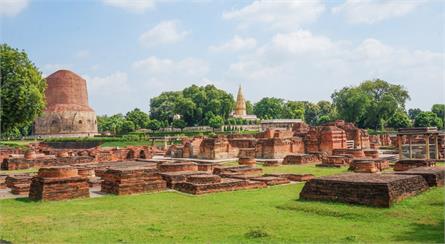
Uttar Pradesh is a sacred land with many religious sites. Cities like Varanasi, Ayodhya, Mathura, and Allahabad (Prayagraj) hold immense religious significance for Hindus. Varanasi, situated on the banks of the Ganges, is one of the oldest inhabited cities in the world and an important pilgrimage site. The state is also home to numerous mosques, mausoleums, and shrines that showcase Islamic architectural styles.
7. Folk Traditions
Uttar Pradesh has a rich tapestry of folk traditions and performing arts. Folk music and dance forms like Raslila, Ramlila, and Nautanki are popular in the region. These art forms depict mythological stories and local legends, often accompanied by vibrant costumes and lively music.
The cultural heritage of Uttar Pradesh is diverse and deeply rooted in its historical, religious, and artistic traditions. The state's cultural richness is evident in its festivals, cuisine, arts, crafts, and spiritual practices, making it a captivating destination for exploring the vibrant tapestry of Indian culture.
Also Read: The Capital of Madhya Pradesh
Climate
Uttar Pradesh experiences a diverse climate due to its vast geographical expanse. The state generally has a subtropical climate with hot summers and cool winters. Summers from April to June are characterized by scorching heat, with temperatures soaring above 40°C (104°F). Monsoon season begins in July and lasts till September, bringing moderate to heavy rainfall. Winters, from November to February, are cool and pleasant, with temperatures ranging from 8°C to 20°C (46°F to 68°F). Foggy conditions are common during December and January. The climate of Uttar Pradesh showcases variations across its regions, ranging from the Himalayan foothills to the Gangetic plains and the Vindhya Range.
Economy and Infrastructure
The economy of Uttar Pradesh, India's most populous state, is a diverse mix of agriculture, manufacturing, services, and tourism sectors. Agriculture plays a significant role in the state's economy, with Uttar Pradesh being one of the country's largest producers of food grains, sugarcane, potatoes, and oilseeds. The manufacturing sector is well-developed, encompassing textiles, leather, chemicals, engineering goods, and food processing. Cities like Kanpur, Agra, Noida, and Ghaziabad are major industrial centres, attracting investment and contributing to employment generation.
In terms of infrastructure, Uttar Pradesh has made substantial progress. The state boasts a well-connected road network, facilitating the movement of goods and people. It has also invested in developing expressways like the Agra-Lucknow Expressway and the Purvanchal Expressway to enhance connectivity and promote trade. Uttar Pradesh focuses on improving power and energy infrastructure, with a mix of thermal, hydroelectric, and renewable energy sources, to meet the growing electricity demand. Additionally, the state's tourism sector has flourished, with iconic attractions like the Taj Mahal, Varanasi, and Ayodhya drawing in visitors from around the world. Efforts are being made to enhance tourism infrastructure further to accommodate increasing tourist inflow.
Agriculture

Agriculture is a vital sector in Uttar Pradesh, contributing significantly to the state's economy and providing employment to many of the population. The fertile Gangetic plains and favourable climatic conditions make Uttar Pradesh a favourable region for agricultural activities. The state is known as the "Grain Bowl of India" due to its substantial production of food grains.
Uttar Pradesh produces wheat, rice, sugarcane, oilseeds, potatoes, and fruits. It ranks among the top states in India for wheat and sugarcane production. The farmers in the state practice both traditional and modern farming methods. They use modern techniques, machinery, and irrigation systems to increase productivity. Wheat is Uttar Pradesh's principal crop. Wheat is the primary food crop in the state, and sugarcane is the primary commercial crop. It is grown on around 24% of the state's agricultural acreage.
The state government has implemented various agricultural schemes and policies to support farmers and improve agricultural practices. Initiatives such as providing subsidies for agricultural inputs, crop insurance, and promoting organic farming have been undertaken. The state has also emphasized the development of agricultural infrastructure, including irrigation facilities, rural roads, and storage facilities, to enhance productivity and reduce post-harvest losses.
Uttar Pradesh has witnessed advancements in the dairy sector as well. It is one of the leading states in milk production, with a well-established network of milk cooperatives and dairy processing units.
However, challenges such as fragmented landholdings, water scarcity in certain regions, and pest infestation persist. Efforts are being made to address these challenges through initiatives like watershed management, sustainable agriculture promotion, and modern farming practices.
Government and Politics
Government and politics are the fundamental pillars that shape the functioning and decision-making of a nation or state. They encompass the institutions, processes, and ideologies through which power is exercised, policies are formulated, and governance is carried out. The government represents the collective will of the people, maintaining law and order, providing public services, and shaping the socio-political landscape. On the other hand, politics involves competition, negotiation, and debate among individuals, parties, and interest groups to gain and exercise power. Government and politics play a crucial role in determining a society's direction, stability, and progress.
I. Government Structure
Governor serves as the ceremonial head.
Chief Minister is the executive head.
Unicameral legislature - Uttar Pradesh Legislative Assembly (Vidhan Sabha).
Representation in the Lok Sabha (Lower House) and Rajya Sabha (Upper House).
II. Major Political Parties
Bharatiya Janata Party (BJP)
- In recent years, it has emerged as a significant political force.
-Forms the current state government.
Samajwadi Party (SP)
- Traditionally influential, representing various sections of society.
- Active involvement in regional and caste-based politics.
Bahujan Samaj Party (BSP)
- Historically significant, focusing on social justice and Dalit empowerment.
- Caste-based politics are a vital aspect of their approach.
III. Governance and Administration
- Chief Minister and Council of Ministers responsible for governance.
- Various departments headed by Cabinet Ministers or Ministers of State.
- Focus on agriculture, infrastructure development, education, healthcare, and social welfare.
- Initiatives such as Kisan Samman Nidhi, Ayushman Bharat, and Skill Development Programs.
IV. Political Challenges
- Law and order issues.
- Corruption.
- Poverty and development disparities between urban and rural areas.
V. Government Initiatives
- Improving public service delivery.
- Promoting industrial growth.
- Addressing socio-economic disparities.
- Schemes like Kisan Samman Nidhi, Ayushman Bharat, and Skill Development Programs.
Education
Education in Uttar Pradesh is a crucial aspect of its socio-economic development. The state has made significant progress in expanding educational opportunities and improving the quality of education. Here is a comprehensive overview of the education system in Uttar Pradesh.
1. School Education
Primary Education- The state follows a 5+3+2 system, comprising five years of primary education (classes 1-5).
Secondary Education includes three years of upper primary education (classes 6-8).
High School Education covers two years of secondary education (classes 9-10).
Medium of Instruction- Schools in Uttar Pradesh offer education in Hindi, English, and regional languages.
Board Examinations- The Uttar Pradesh Madhyamik Shiksha Parishad (UPMSP) conducts the high school (Class 10) and intermediate (Class 12) examinations.
2. Higher Education
Universities- Uttar Pradesh is home to several renowned universities, including the University of Lucknow, Banaras Hindu University, Aligarh Muslim University, and Allahabad University.
Technical Education- The state has a network of technical institutions, including the Indian Institutes of Technology (IITs), National Institutes of Technology (NITs), and state engineering colleges.
Medical Education- Uttar Pradesh has prestigious medical colleges and research institutes like King George's Medical University and Sanjay Gandhi Postgraduate Institute of Medical Sciences.
Other Professional Courses- The state offers many professional courses in law, management, agriculture, and pharmacy.
3. Government Initiatives
Sarva Shiksha Abhiyan (SSA)
A flagship program aimed at universalizing primary education and improving its quality.
Mid-Day Meal Scheme
To enhance student enrollment and nutrition, free mid-day meals are provided in government schools.
Vocational Training
Initiatives like the National Skill Development Corporation (NSDC) and vocational training centres aim to equip students with employable skills.
Scholarships
The state government provides scholarships to support the education of economically disadvantaged students.
4. Challenges and Reforms
Access to Quality Education- Ensuring access to quality education in rural and remote areas remains a challenge.
Dropout Rates- Efforts are being made to reduce dropout rates, especially among girls, through various incentives and awareness campaigns.
Teacher Training- Continuous professional development programs are being implemented to enhance the skills of teachers.
Infrastructure- Upgradation of school infrastructure, including classrooms, libraries, and laboratories, is an ongoing focus.
5. Literacy Rate
According to the 2011 census, the literacy rate in Uttar Pradesh stood at around 69.72%, with significant efforts being made to increase it further.
The education system in Uttar Pradesh is continuously evolving to meet the needs of its diverse population. The government's emphasis on providing quality education and improving infrastructure has contributed to the growth of educational opportunities in the state. Efforts are ongoing to address challenges and ensure every child receives a quality education.
Population

Uttar Pradesh's estimated population in 2023 is 231,502,578 people.
The male population in 2023 is estimated to be 121,078,754.
The female population in 2023 is estimated to be 110,423,824.
Transportation
Transportation in Uttar Pradesh is crucial in connecting various cities, towns, and villages within the state and facilitating travel to other parts of the country. Efforts are continually being made to improve and expand the transportation infrastructure in Uttar Pradesh. The initiatives aim to enhance connectivity, reduce travel time, and facilitate the movement of goods and people across the state. The state has a well-developed transportation infrastructure comprising road, rail, air, and waterways.
1. Roadways
Uttar Pradesh has an extensive network of roadways, making it easily accessible by buses, cars, and other vehicles. The state has a vast system of national highways, highways, and district roads. The National Highway Authority of India (NHAI) maintains several major highways passing through the state, including the National Highways 2, 24, 27, 30, 34, and 44. The Uttar Pradesh State Road Transport Corporation (UPSRTC) operates a comprehensive bus service, connecting various cities and towns within the state and neighbouring states.
2. Railways
The railway network in Uttar Pradesh is well-developed, with numerous railway stations connecting the state to different parts of India. The Northern Railway and North Eastern Railway Zone operate several essential railway lines, including the Delhi-Kolkata Main Line, Delhi-Mumbai Line, and Delhi-Chennai Line. Major railway junctions in the state include Kanpur Central, Lucknow Charbagh, Allahabad Junction, Varanasi Junction, and Agra Cantt. These junctions serve as important transit points for both passenger and freight trains.
3. Airports
Uttar Pradesh has several airports catering to domestic and international air travel. The Chaudhary Charan Singh International Airport in Lucknow and Lal Bahadur Shastri International Airport in Varanasi are the two major international airports in the state. Additionally, there are domestic airports in Agra, Allahabad, Gorakhpur, Kanpur, and other cities. These airports facilitate air travel and connect Uttar Pradesh with various cities nationwide and abroad.
4. Waterways
The state of Uttar Pradesh is traversed by several rivers, making water transport an essential mode of transportation in certain areas. The National Waterway-1 (NW-1) on the Ganges River passes through the state, connecting it to other states like Bihar and West Bengal. The cities of Allahabad and Varanasi have river ports that facilitate cargo and passenger transportation along the Ganges.
5. Metro Rail
Uttar Pradesh has witnessed the introduction of metro rail systems in some of its major cities. The Lucknow Metro, operational since 2017, has been a significant addition to the state's transportation infrastructure, providing a convenient and efficient mode of transport within the city. Other cities like Noida and Ghaziabad also develop metro rail networks to ease commuting and reduce traffic congestion.









